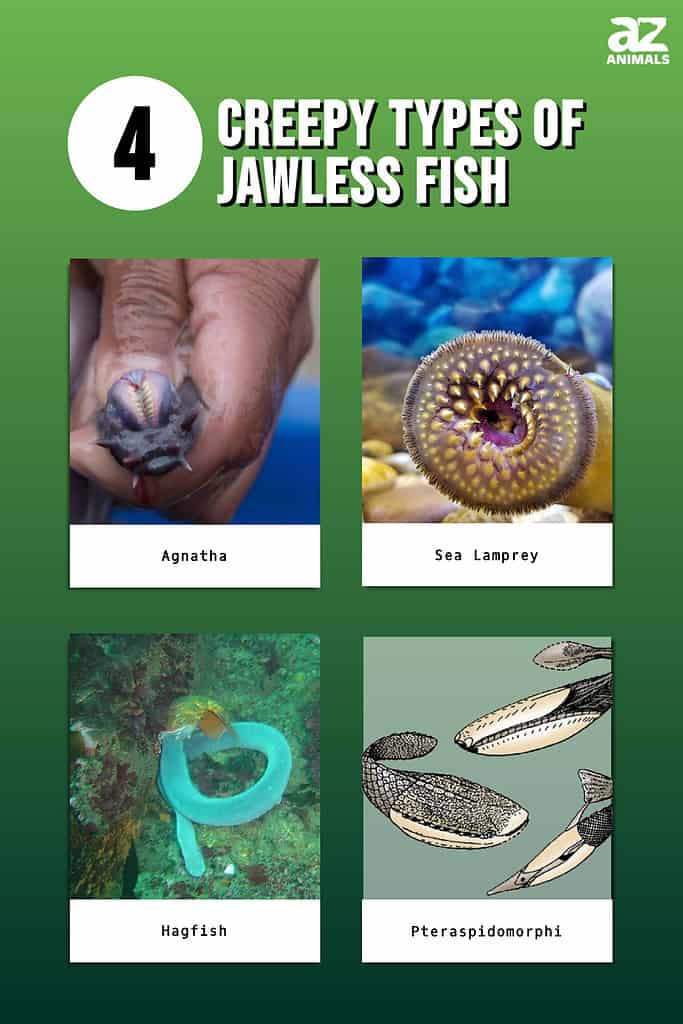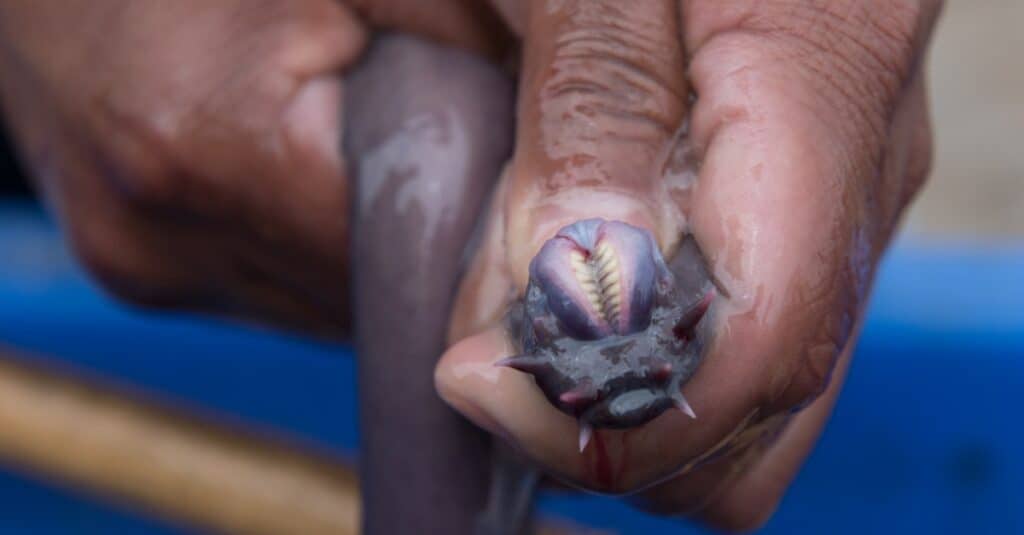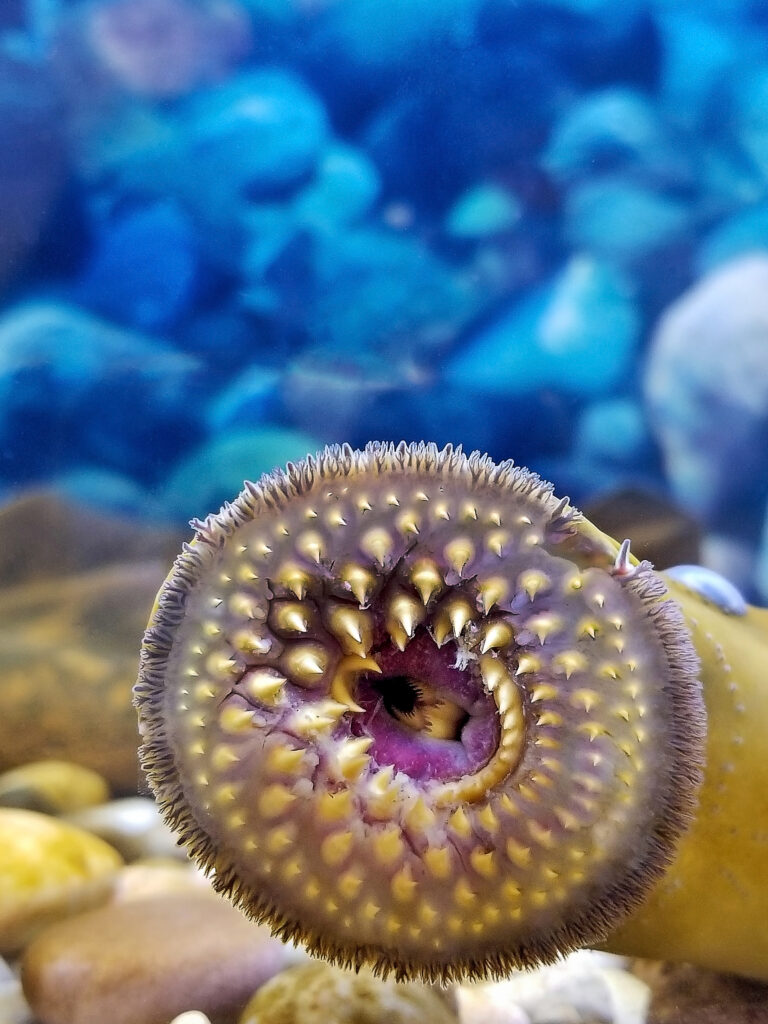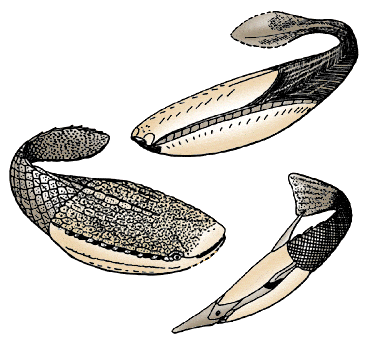How much do you know about jawless fish? These unique animals are actually very few and far between. There are only a handful of jawless fish species or groups, and many of them went extinct millions of years ago. They are quite mysterious and a little creepy, but they are also vital to their respective ecosystems. Let’s take a look at a few examples of jawless fish, shall we?

1. Agnatha
Classification: Petromyzoniformes order
Agnathans are a varied group of prehistoric fish that make up the superclass Agnatha and are also referred to as jawless fish. They may be distinguished from more developed fish groups by their absence of jaws and paired fins. Agnathans are among the earliest vertebrates on Earth and provide important information on the origins of vertebrate anatomy.
Hagfish vs. Lampreys
Hagfishes (class Myxini) and lampreys (class Petromyzontida) are the two main subgroups of agnathans. Hagfishes are mostly marine and may be found worldwide in chilly ocean environments. Their bodies are long and eel-like, and their skin is slippery and without scales. Hagfishes are scavengers that eat rotting and dead marine life from the ocean floor. They have a peculiar eating technique where they dig inside corpses and scrape flesh off with their specialized rasping tongues.
On the other hand, lampreys live in both freshwater and marine habitats and have a more complicated life cycle. They are mostly found in the Northern Hemisphere, which includes Europe and North America. Lampreys have an unusual mouth shape with a circular, sucker-like shape and a line of pointed tooth-like protrusions. Some species of lamprey, like the sea lamprey, are parasites that eat other fish’s blood and other fluids. Lampreys are not entirely parasitic; some of them are non-parasitic and eat debris or tiny invertebrates.
Hagfishes and lampreys both lack genuine scales and have cartilaginous bones. They lack typical stomachs and have rudimentary, single-chambered hearts. Additionally, agnathans lack paired appendages like fins, despite the fact that they may have median fins for propulsion.
These jawless fish are vital components of their own habitats. By eating carrion (a.k.a. dead animal remains) hagfishes contribute to keeping the ocean floor clean. They also produce slime as a form of protection against predators. Despite being parasitic, lampreys provide a source of food for many predatory animals. They are used in culinary traditions and have cultural importance in some groups of people.

Agnathans like the hagfish (pictured) tend to be either parasitic or bottom-feeders.
©Frank Fennema/Shutterstock.com
2. Sea Lamprey
Classification: Petromyzon marinus
The family Petromyzontidae includes the primitive, jawless fish known as sea lampreys or Petromyzon marinus. Native to the Atlantic Ocean and nearby freshwater systems, especially in North America and Europe, these intriguing species are found in many different sources of water. Because of their distinctive morphology and parasitic habit, sea lampreys are pretty easy to identify.
Sea lampreys have an elongated, eel-like body coated in slimy, scaleless skin. In general, they are roughly two to three feet long. True jaws are absent on this animal, but they do have a round, sucker-like mouth that is lined with rows of pointed tooth-like protrusions. Using their teeth, they can attach themselves to other fish so they can feed on their blood and other fluids. Sea lampreys differ from the majority of other fish species in that they eat parasitically.
Life Cycle and Behavior
Sea lampreys change dramatically over their life cycle. They first appear as ammocoetes, which are tiny, worm-like larvae that live in freshwater rivers and streams. Lampreys scavenge into muddy or sandy surfaces as ammocoetes and filter-feed on minute creatures. They develop into parasitic adults after a few years and swim to the sea. Lampreys actively seek out host fish in the water by detecting their movements and chemical signals.
The effects of sea lampreys on commercial and recreational fish populations are unfortunately not so great. They cause a wound when they adhere to a host and then feed on the host’s bodily fluids using their rasping tongue and pointed teeth. The host fish may become sick or possibly die from this interaction. They have significantly harmed fish populations because of their parasitic nature and capacity to attach to different fish species, especially in the Great Lakes of North America.
To lessen their effects, measures have been taken to regulate sea lampreys. To stop fish from migrating to breeding grounds, one strategy is to install obstacles and traps in rivers. Lamprey larvae can also be carefully targeted using chemical controls, such as lampricides, to prevent damage to other aquatic creatures.
Sea lampreys are parasitic, yet they are nevertheless important to the ecology because they provide food for other species. For certain Indigenous cultures, who traditionally eat sea lampreys and utilize them in rituals, they have cultural significance as well.

The sea lamprey (pictured) is notably parasitic and can damage fish populations.
©Maria Dryfhout/Shutterstock.com
3. Hagfish
Classification: Myxinidae family
Hagfishes are a type of jawless fish of the Myxini class. They are distinguished by their unusual and primitive traits. They inhabit a variety of marine environments and have an interesting biology.
Hagfishes are characterized by their long, eel-like bodies and their slimy, scaleless skin. Although some species can grow up to three feet long, most species are between 12 and 18 inches long. Hagfishes have a cartilaginous head and a flexible rod termed a notochord in place of a genuine vertebral column. They can sense chemical signals in the water and have a highly developed sense of touch.
Benefits of Hagfish
The shallow and deep marine waters of temperate and frigid climates are home to these jawless fish. They frequently inhabit the ocean floor, digging their way through muddy or sandy substrates. Hagfishes have been observed living in shipwrecks, cracks, and tunnels. The Atlantic, Pacific, and Indian Oceans all contain them.
Hagfishes are scavengers with an unusual method of eating. To remove meat from carcasses, they use a rasping tongue on them known as a radula. They are opportunistic eaters and are frequently drawn to dead or dying species on the ocean floor. Hagfishes are known to access the internal organs of deceased animals by burrowing into the flesh or entering through natural holes.
These animals are capable of creating slime, which is one of their most amazing characteristics. Hagfishes release slime when frightened or disturbed, which aids in their ability to flee from predators. This thick, gelatinous material is created by specialized slime glands that are located along the edges of their bodies. The slime can expand several times its initial volume, obstructing predators’ mouths and gills.
Hagfishes, despite their unusual looks and eating preferences, are significant members of marine ecology. They contribute to the recycling of nutrients and preservation of the ocean floor’s cleanliness by eating carrion and decomposing materials.

Hagfish (pictured) are very important to their respective ecosystems because they keep the ocean floor clean.
©Peter Southwood / CC BY-SA 3.0 – License
4. Pteraspidomorphi
Classification: Pteraspidomorphi class
An extinct group of jawless fish known as pteraspidomorphi, or pteraspidomorphs, lived from the Silurian to Devonian periods around 443 to 359 million years ago. They are regarded as among the first vertebrates and were very important in the earliest stages of the evolution of jawed vertebrates.
The body of a pteraspidomorphi was strongly armored and coated with bone plates, giving them a striking look. They possessed a round, sucker-like mouth instead of genuine jaws, like contemporary lampreys and hagfishes. They had heterocercal tails, which means the upper lobe of their tail fin was greater than the bottom lobe, and elongated, streamlined bodies.
Most of these extinct fish were discovered in marine habitats, while several species were discovered in freshwater deposits. Pteraspidomorph fossils have been found in a number of locations, including North America, Europe, Australia, and China.
Diet and Anatomy
Based on their physical characteristics and the examination of their preserved stomach contents, we have some theories on pteraspidomorphs’ diet. They most likely fed on minute particles and creatures in the water using their unique mouth features, making them filter feeders. Branchial baskets were utilized by pteraspidomorphs to filter and strain food particles from the water column. It’s also possible that certain species were detritivores, eating organic material from the sediment.
Their bodies were covered with bone plates that acted as armor. These plates, known as dermal scutes, protected the animal from predators and may have also been used for body temperature control or camouflage. diverse species have diverse scute arrangements and shapes.
Pteraspidomorphs lacked the completely ossified bones observed in later vertebrates and instead possessed a cartilaginous skeleton. Their comparatively basic internal organs demonstrated their early evolutionary stage. They possessed a single-chambered heart and a notochord, like most jawless fish.
Even though pteraspidomorphs themselves eventually became extinct, they are nevertheless very significant in terms of paleontology since they mark a crucial point in the development of jawed vertebrates. They offer insights into the early evolution of defensive structures and the change from filter-feeding to predation due to their armored bodies and specialized feeding methods.
How cool are these jawless fish? While you won’t have to worry about these creepy fish causing any sort of harm, they are still quite fascinating to learn about!

Pteraspidomorph fossils have been found in a number of locations, including North America, Europe, Australia, and China.
©Philippe Janvier/CC BY SA- 3.0 – License
Summary of 4 Creepy Types Of Jawless Fish
| Jawless Fish | Classification | |
|---|---|---|
| 1 | Agnatha | Petromyzoniformes order |
| 2 | Sea Lamprey | Petromyzon marinus |
| 3 | Hagfish | Myxinidae family |
| 4 | Pteraspidomorphi | Pteraspidomorphi class |
The photo featured at the top of this post is © Gena Melendrez/Shutterstock.com
Thank you for reading! Have some feedback for us? Contact the AZ Animals editorial team.






